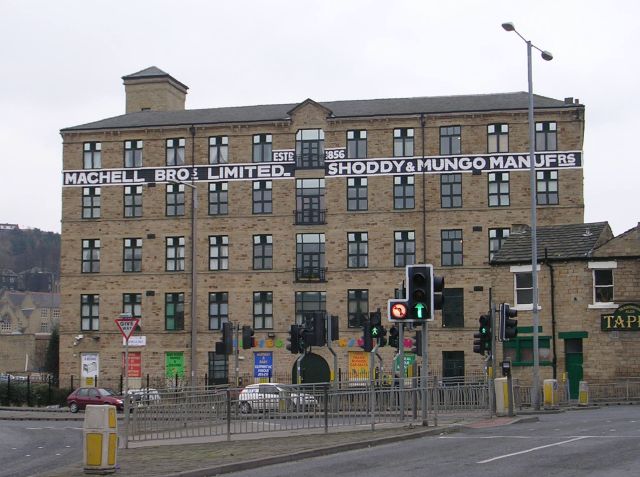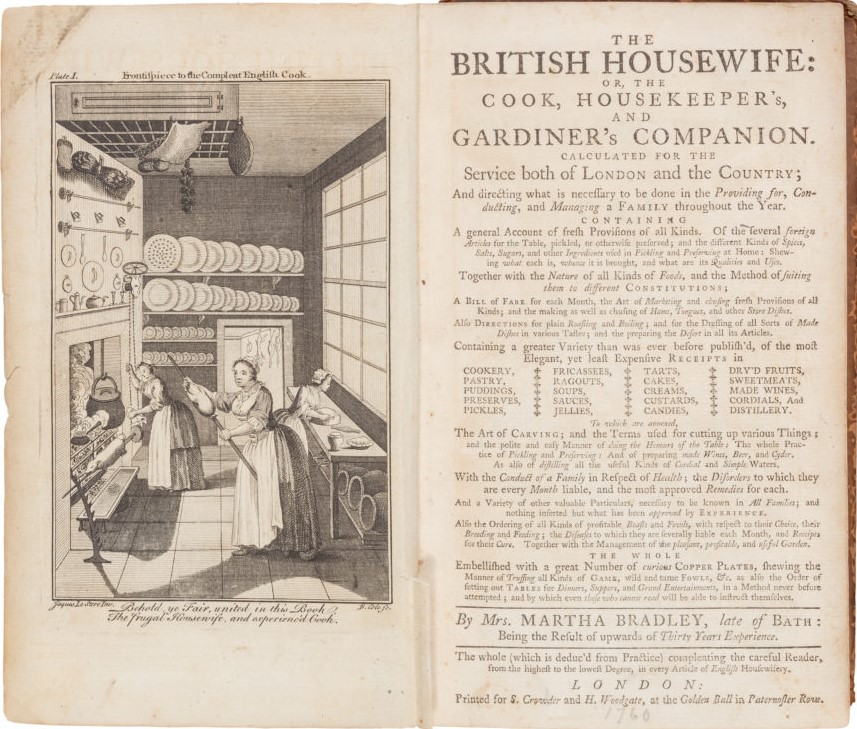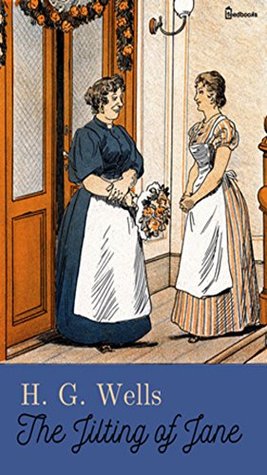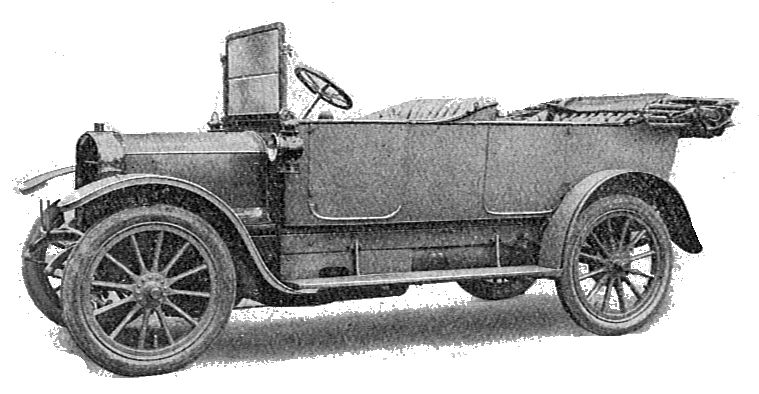91 suggestions for "yorkshire"
AberfordRural village and civil parish in West Yorkshire, a historic settlement in the ancient Kingdom of Elmet.
AkroydonModel village developed near Edward Akroyd’s Bankfield mansion in Haley Hill, Halifax in the West Riding of Yorkshire. The houses are in blocks of six to ten around the park in streets named after cathedral cities.
All Saint’s Church, LedshamActive Anglican church in Ledsham, West Yorkshire, possibly the oldest extant building in the county.
Arthington PrioryArthington Priory, founded in the mid-12th century, was a nunnery or convent that was home to a community of about ten nuns in Arthington, Yorkshire.
Bentley GrangeShaft mounds and earthworks south of Bentley Grange Farm are the remains of a medieval iron mining site between Emley and West Bretton in West Yorkshire.
Bolton Percy Gatehouse15th-century building in the village of Bolton Percy near York, the entrance to a courtyard of buildings that included the village rectory.
Bootham LodgeGrade II listed mansion-style house on Bootham, York.
Bretton HallCountry house on the north slope of the valley of the River Dearne in West Bretton near Wakefield, West Yorkshire, England.
Burmantofts PotteryMajor producer of decorated tiles and architectural ceramics in Yorkshire.
Calder and Hebble NavigationConstructed between 1758 and 1834, the navigation makes the River Calder navigable between Sowerby Bridge and Wakefield in the West Riding of Yorkshire.
Caphouse CollieryEx-colliery in Overton, near Wakefield, West Yorkshire, now the National Coal Mining Museum for England.
Castle HillCastle Hill is a scheduled ancient monument overlooking Huddersfield in Kirklees, West Yorkshire.
Chantry Chapel of St Mary the VirginUsually known as Wakefield Chantry Chapel, part of the medieval bridge over the River Calder in Wakefield, West Yorkshire, England.
Cistercian wareType of earthenware pottery manufactured in England in the 16th and 17th centuries.
Combs CollieryDeep coal pit in West Yorkshire, scene of a major explosion in 1839 that killed 139 men and boys working underground.
CopleyModel village built by Colonel Edward Akroyd in the Calder Valley to the south of Halifax in the West Riding of Yorkshire, England.
Devil’s KnellCustom associated with Dewsbury Minster in West Yorkshire, England.
Dewsbury MinsterParish church in Dewsbury, and Mother Church of West Yorkshire.
Elland flagsSandstones interbedded with mudstones and siltstones in the Lower Coal Measures of West Yorkshire, once extensively quarried.
ElsecarFormer mining village in South Yorkshire, six miles north of Rotherham and six south of Barnsley.
Elsecar CollieriesCollieries in South Yorkshire owned by the Wentworth Fitzwilliams from the late 18th century.
Elsecar engineSteam-driven Newcomen-type atmospheric pumping engine still in its original engine house at Elsecar near Barnsley. Designed by John Bargh of Chesterfield, the engine, is based on one invented by Thomas Newcomen in 1712.
EmleyRural village in the South Pennine fringe, midway between Hudddersfield and Wakefield.
Emley Moor CollieryEmley Moor Colliery refers to several sinkings and drift mines over a large area of Emley, towards the television mast, between Flockton to the north and particularly towards Skelmanthorpe to the south
Emma Lister-KayeColliery owner in Overton near Wakefield in the West Riding of Yorkshire from 1871 until 1905.
Ferry BridgeHistorically important crossing over the River Aire in North Yorkshire, designed by John Carr.
FlocktonRural village stretched out along the Barnsley to Huddersfield road in Kirklees, West Yorkshire, taking its name from a Viking settler.
Flockton CollieriesSeveral pits, some started before 1700, around Flockton and Middlestown between Wakefield and Huddersfield in the West Riding of Yorkshire.
Friars HeadGrade II* listed house near the village of Winterburn in North Yorkshire.
Grange Ash CollieryColliery that operated between 1871 and 1966, south of the A642 road east of Grange Moor crossroads.
Grange MoorTract of moorland more than 700 feet above sea level gave its name to this Yorkshire village.
Halifax GibbetEarly guillotine, or decapitating machine, used in the town of Halifax, West Yorkshire, England. It was probably installed during the 16th century as an alternative to beheading by axe or sword.
HeathVillage in the City of Wakefield in West Yorkshire, noted for its ancient common and the number of "mansions" around it.
Heath HallCountry mansion on Heath Common, near Wakefield in West Yorkshire
Heavy Woollen DistrictArea of West Yorkshire whose prosperity rested on the manufacture of shoddy and mungo, an early form of recycling.
Hob MoorLocal nature reserve and ancient common in York
Hoober StandMonumental tower in the form of a tapering pyramid topped with a hexagonal lantern, named for the ancient wood in which it was erected.
Howley HallRuined Elizabethan country house in Morley, West Yorkshire, designated a scheduled monument in 1997.
Howroyd CollieryName for a number of day holes and drifts that worked the coal at the outcrop.
Huskar Pit DisasterDeaths of 26 boys and girls working underground, drowned by an overflowing stream.
Ingham CollieryFormer colliery to the north of the village of Thornhill in West Yorkshire.
Jervaulx AbbeyRuined Cistercian monastery and scheduled monument about one and a half miles (2.4 km) east of East Witton in Wensleydale, North Yorkshire.
Kaye’s Mineral LineStandard gauge mineral line built to serve the pits owned by the Lister Kayes of Denby Grange in West Yorkshire.
Keppel’s ColumnOne of several follies and monuments erected on the Wentworth Park Estate in South Yorkshire.
Kirklees PrioryMedieval nunnery associated with the legend of the death of Robin Hood.
LedstonRural village in the City of Leeds district of West Yorkshire.
Ledston HallGrade I listed former country house in West Yorkshire, now divided into residences.
Ledston Luck CollieryColliery nine miles east of Leeds and three miles north of Castleford on the Roman Ridge Road, sunk after coal had been proved under the Ledston Hall Estate in 1909.
Leeds arcadesFour Victorian shopping arcades built between 1878 and 1904, all listed buildings and still in use.
Leeds Cloth HallsSix cloth halls have been built in Leeds since 1711, and the remains of two survive. Four were for white cloth, one for mixed or coloured cloth and one for cloth made by unapprenticed clothiers.
Leeds PotteryPottery established in 1770 in Hunslet, South Leeds notable for intricate pierced creamware known as Leedsware.
Lund’s TowerStone-built folly in North Yorkshire, commissioned by James Lund and completed in 1887.
Lupset HallSmall country house built in Lupset, West Riding of Yorkshire in1716, as a gentleman's residence for Richard Witton.
Mary Bolles17th-century Yorkshire woman uniquely created a baronetess in her own right.
Mary PannellWoman associated with witchcraft at Ledston Hall in the West Riding of Yorkshire. Died in 1603, and is said to haunt the nearby woods.
Masbro’ boat disasterSixty-four people, mainly children, were drowned in the River Don in Masbrough, Yorkshire, on 5 July 1841 when the launch of a boat went wrong.
Matthew MurrayMatthew Murray was an engineer born in Newcastle on Tyne who became known for improving steam engines and building the first commercially successful steam locomotive.
Nostell CollieryFormer colliery on the South Yorkshire Coalfield, about four and a half miles south east of Wakefield, on the Nostell Priory estate.
Piece HallRare example of a large-scale cloth hall – an exchange for trading woollen and worsted cloth "pieces" – that is largely intact.
Potovens potteryHamlet on the Wakefield Outwood, now known as Wrenthorpe, where small pot works were built.
Potts of LeedsCompany founded in 1833 in Leeds, England to make domestic timepieces , which expanded into the manufacture and repair of public clocks.
Red HouseHouse built in 1660 by William Taylor, whose descendants owned it until 1920. The Taylor family were farmers and clothiers, who developed their business into cloth finishing and became merchants.
Rhubarb TriangleForced rhubarb growing area in West Yorkshire, England between Wakefield, Morley and Rothwell.
Rockingham MausoleumMonument commissioned by the Earl Fitzwilliam as a memorial to the second Marquess of Rockingham in 1783.
Round FoundryEngineering works off Water Lane in Holbeck, Leeds in Yorkshire, built for Fenton, Murray and Wood.
SalamancaSalamanca, designed and built by Matthew Murray in 1812, was the world’s first commercially successful steam locomotive.
Sandal CastleRuined medieval castle in Sandal Magna, Wakefield in West Yorkshire, England. One of two castles built overlooking the River Calder, it was built by the Warrennes, the Earls of Surrey who were Lords of the Manor of Wakefield.
ScammondenPennine village that was flooded in the 1960s when Scammonden Dam and the M62 trans-Pennine motorway were constructed.
Scammonden ReservoirReservoir in the South Pennines supplying water to Huddersfield in West Yorkshire.
SitlingtonAncient township of four villages, renamed from Shitlington to Sitlington in 1929.
Slack Roman FortCastellum (fort) in the Roman province of Britannia, which may have been the Cambodunum mentioned as a station on the road between Deva Victrix (Chester) and Eboracum (York).
Standedge crossingsStandedge has been a major Pennine crossing point for more than 2,000 years.
Stanley Ferry AqueductWorld's largest cast-iron aqueduct when it was built between 1837 and 1839.
St Bartholomew’s Chapel, West BrettonFormer estate chapel in the grounds of Bretton Hall, West Yorkshire.
St Clement’s Church, YorkActive Anglican church in York, England, built between 1872 and 1874.
St Gregory’s Church, CroptonGrade II listed active Anglican church in the village of Cropton, North Yorkshire.
St Mary’s Chapel, LeadChapel in the middle of a field containing the earthworks of a vanished medieval manor house.
St Michael and All Angels Church, ThornhillActive Anglican church in Thornhill, West Yorkshire, Grade I listed.
St Peter and St Leonard’s Church, HorburyActive Anglican church in the diocese of Wakefield, usually known as St Peter's.
Swinton PotteryFounded in 1745 and renamed the Rockingham Works in 1826, the company produced fine porcelainware until 1842.
Tammy HallFormer piece or cloth hall, a specialist market for selling worsted cloth. Paid for by subscription, the hall opened in 1778.
Tankersley ironstone bedNamed from its outcrop at Tankersley near Barnsley in South Yorkshire.
Thornhill, West YorkshireFormer township, now a suburb of Dewsbury in Kirkless, West Yorkshire.
Thornhill CollieryFormer colliery in the West Riding of Yorkshire, worked from the 16th century until 1972.
Tickle Cock BridgePedestrian underpass in Castleford, England, under a railway line originally built by the York and North Midland Railway between York and Normanton.
Victoria TowerTower on Castle Hill overlooking Huddersfield, constructed as a permanent memorial for Queen Victoria’s Diamond Jubilee.
Wainhouse TowerLandmark folly and Grade II* listed building in King Cross, Halifax, West Yorkshire.
Wakefield CastleFortification built in the 12th century on a hill on the north side of the River Calder near Wakefield, England.
West BrettonVillage and civil parish in the Wakefield District of West Yorkshire.
Whitley LowerVillage near Thornhill in Kirklees, West Yorkshire.
Whitley UpperTownship in the ancient parish of Kirkheaton, in the West Riding of Yorkshire.
 Manufacture of shoddy and mungo, an early form of recycling, was an important industry in the Heavy Woollen district of West Yorkshire.
Manufacture of shoddy and mungo, an early form of recycling, was an important industry in the Heavy Woollen district of West Yorkshire. Manufacture of shoddy and mungo, an early form of recycling, was an important industry in the Heavy Woollen district of West Yorkshire.
Manufacture of shoddy and mungo, an early form of recycling, was an important industry in the Heavy Woollen district of West Yorkshire. Reputed witch whose corpse kept reappearing from its grave until it was covered by a large boulder.
Reputed witch whose corpse kept reappearing from its grave until it was covered by a large boulder. One of the earliest motorised scooters.
One of the earliest motorised scooters. Nursery rhyme about the best-known of the British sleep spirits, first published in 1841.
Nursery rhyme about the best-known of the British sleep spirits, first published in 1841.

 British manufacturer of steam and petrol-powered vehicles active from 1908 until 1916.
British manufacturer of steam and petrol-powered vehicles active from 1908 until 1916. An English anti-suffragist and civil servant, author of The Anti-Suffrage Handbook of Facts, Statistics and Quotations for the Use of Speakers
An English anti-suffragist and civil servant, author of The Anti-Suffrage Handbook of Facts, Statistics and Quotations for the Use of Speakers